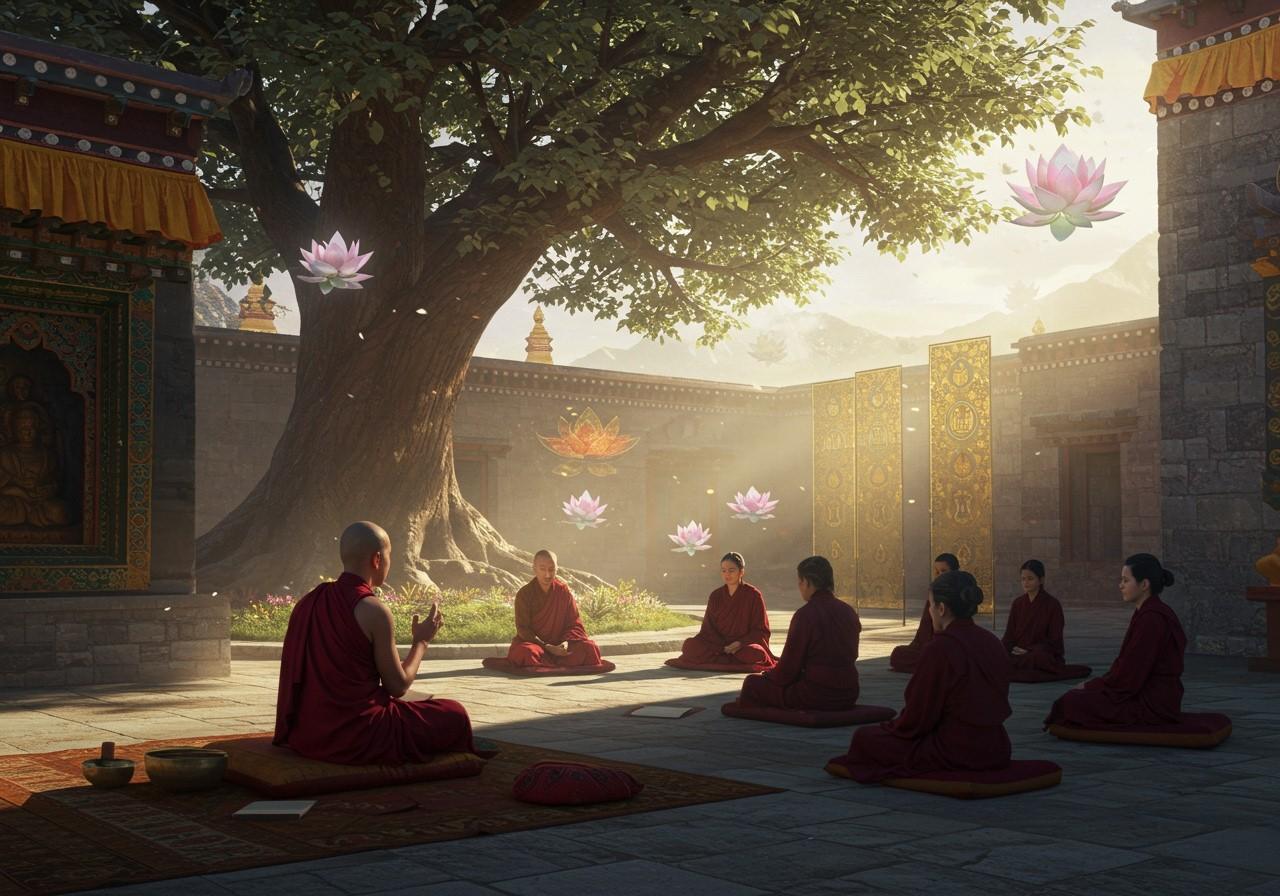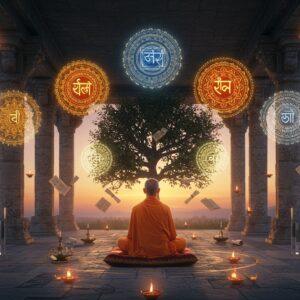
The Buddhist education system, with roots in ancient India, offers a profound and enriching approach to learning. It blends spiritual and practical principles for daily life. This article delves into the distinctive aspects of this system, its historical context, and its enduring relevance in our modern world. This information is particularly valuable for culturally aware Indians who value tradition and authentic rituals.
Historical Background
Origins and Evolution
The Buddhist education system originated in ancient India, with monasteries called Viharas serving as hubs of learning. Siddhartha Gautama (the Buddha) established its core principles, emphasizing both spiritual development and practical skills for everyday life. These teachings profoundly influenced Indian society and culture.
Spread and Influence
Buddhist education spread from India to other Asian nations such as China, Japan, and Southeast Asia. Sacred texts like the Tripitaka became foundational to the curriculum. Though it experienced periods of decline, Buddhist education has seen a resurgence in recent times.
Core Principles
Fundamental Principles
Dharma, a core principle, emphasizes moral and ethical development alongside intellectual growth. Meditation and mindfulness are key practices, nurturing compassion and altruism in students.
Holistic Development
Buddhist education prioritizes holistic development, encompassing physical, mental, and spiritual well-being. The concept of ‘right livelihood‘ integrates practical knowledge and experiential learning, preparing students for a balanced life.
Structure and Curriculum of Monastic Education
Hierarchical System
A hierarchical structure defines roles for teachers and students, progressing from novice to fully ordained monk. This structured approach provides clear guidance and mentorship throughout the learning journey, often taking 12-20 years for a pupil to achieve the intellectual maturity of a monk, culminating in the Upasampada ordination.
Comprehensive Curriculum
The curriculum encompasses diverse subjects, including philosophy, logic, metaphysics, and the study of key scriptures like the Tripitaka. It also integrates arts like calligraphy and sculpture, alongside rigorous meditation practices.
Modern Adaptations
Contemporary Institutions
Modern Buddhist universities and educational centers have emerged, integrating Buddhist principles into secular education systems. This integration enriches the learning experience, fostering values-based education alongside academic pursuits.
Technology and Collaboration
Technology and online platforms play an increasing role in disseminating Buddhist teachings and practices. International collaborations further promote these educational endeavors, creating new avenues for growth and accessibility.
Impact on Individuals and Society
Personal Growth
Buddhist education cultivates personal growth, self-awareness, and mindfulness. By emphasizing compassion and ethical conduct, it promotes harmony within individuals and society.
Contributions to Society
Individuals nurtured by Buddhist education have contributed significantly to various fields. Buddhist scholars play a vital role in preserving cultural heritage and promoting understanding and tolerance.
How Poojn.in Supports Buddhist Practices
Poojn.in offers a wide array of items to support Buddhist educational practices:
- Prayer Beads (Malas): Authentic malas aid in meditation and concentration during study. Available in various materials, these malas enhance focus and mindfulness practices.
- Incense Sticks: Traditional incense creates a serene atmosphere conducive to learning and reflection. Poojn.in offers a selection of high-quality incense to enhance the study environment.
- Bells: Copper and brass bells, essential in Buddhist traditions, mark study periods and meditation times, creating a structured and mindful daily routine.
- Meditation Cushions and Mats: Comfortable cushions and mats ensure proper posture during long study sessions, supporting physical well-being and focus.
- Buddhist Texts and Materials: Poojn.in provides access to traditional Buddhist texts and learning resources, fostering deeper understanding and engagement with the teachings.
- Prayer Wheels: Prayer wheels, significant in Buddhist practice, are available in various sizes and materials to support individual and communal practices.
Poojn.in offers convenient online shopping with pan-India delivery, making these resources accessible to all. Visit Poojn.in to explore our collection.
Conclusion
The Buddhist education system presents a holistic approach to learning, emphasizing moral, intellectual, and spiritual growth based on the Buddha’s teachings. From ancient origins to modern adaptations, it continues to enrich individuals and societies, fostering personal development, social harmony, and the preservation of cultural heritage. The integration of Buddhist principles, like mindfulness and compassion, with modern educational practices offers valuable tools for navigating contemporary challenges and cultivating human potential.


